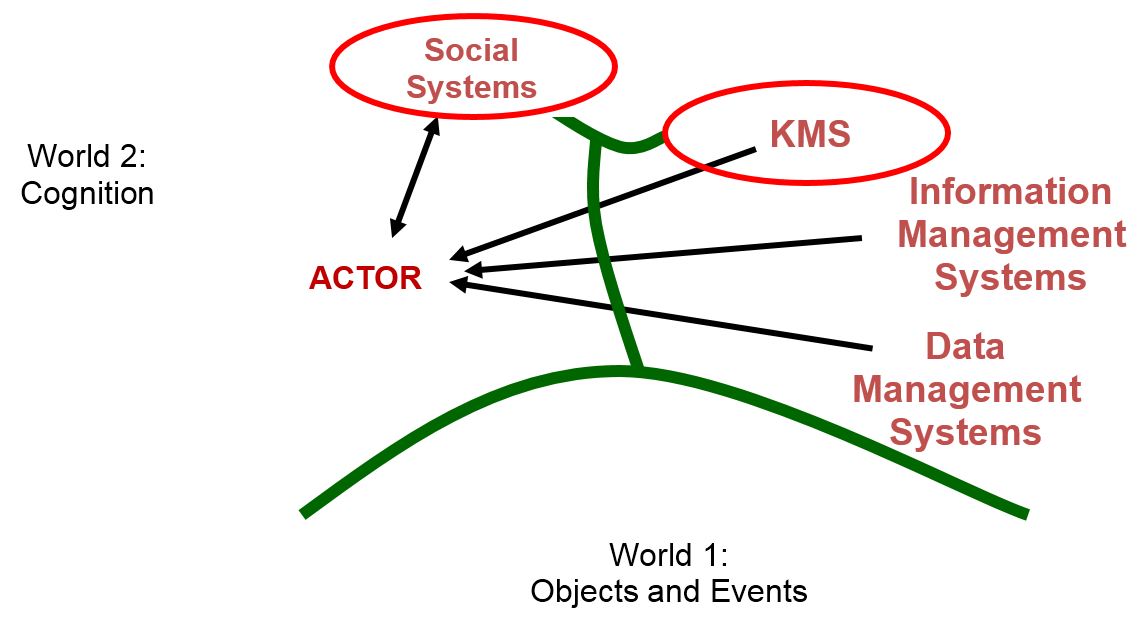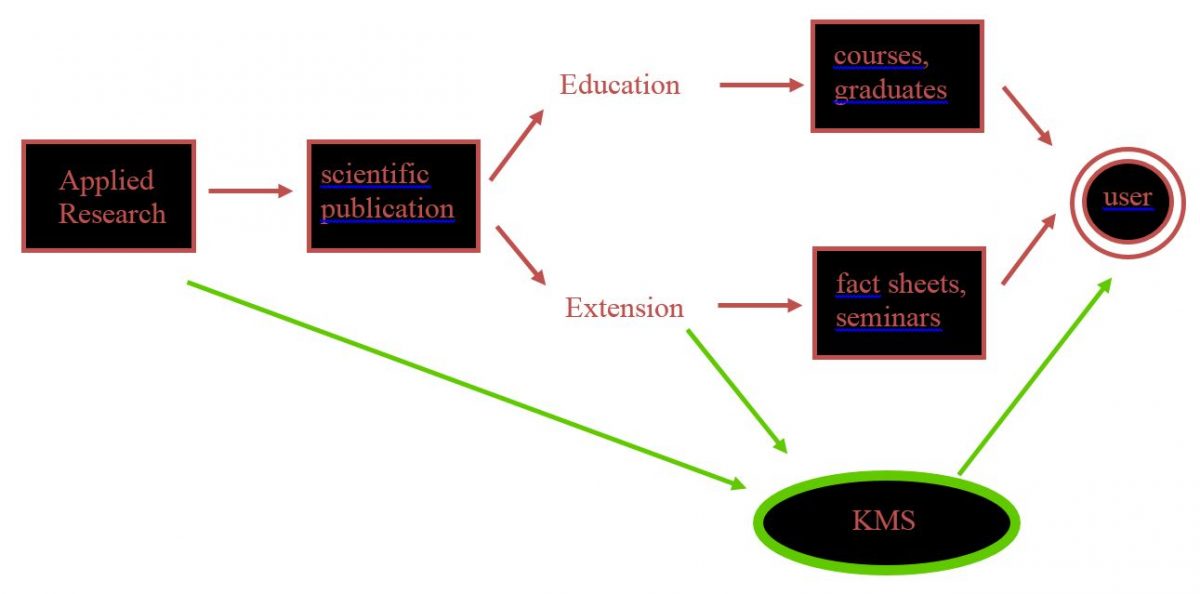Introduction
The paper is written by Alonso Perez-Soltero, Rafael Amaya-Melendrez, and Mario Barcelo-Valenzuela focuses on how the decision-making process in the training area can be improved with the use of a knowledge management system. The main knowledge management concept that underlies this paper is the systematic and explicit way in which knowledge management system can be used to improve the learning process. According to Lin, Yeh, and Tseng (2005, p. 38), knowledge management systems refer to “The process of capturing, developing, sharing, and effectively using organisational knowledge.”
In this paper, scholars have tried to identify the relevance of the knowledge management system in improving the process of decision making within organisations. When making an important decision, it is necessary to have a knowledge base that supports the decision-making process (Soltero, Melendrez & Valenzuela 2013, p. 19). This way, any wrong assumptions will be avoided by the top and middle managers when developing strategic decision for an organisation. The researcher is doing this assignment to critically analyse how well this article has used the concept of knowledge management in light of the works of Dalkir.
Justification of the research
According to Hedlund (1994, p. 85), it is worrying that most of the training institutions are managed some of the old concepts that have ceased being relevant in the current environment. This is so because the managers at these institutions lack clear knowledge management systems that can guide their decision-making process. This paper has identified some of the main knowledge management concepts that are relevant to training institutions and how they can be used to improve the decision-making process in training institutions.
The paper points out at the important stages of knowledge management, from data collection, its analysis, the storage systems, and its dissemination to various stakeholders for the appropriate application. The researcher considered this assignment important because it seeks to identify some of the main ideas presented in the paper with a view of determining how they vary from what the researcher has been studying in this unit. This paper may help in updating Dalkir text in terms of how a knowledge management system can be used to improve the process of delivering instructions to the masses.
Summary of the paper
This paper seeks to identify specific skills, talents, or abilities that can be used in the identification of relevant knowledge on the basis of knowledge management philosophies when training employees within an organisation. Knowledge is dynamic, and the best way to ensure that employees have the right knowledge in a given field is to maintain a training process that would refresh their knowledge (Soltero, Melendrez & Valenzuela 2013, p. 12). They should have the current information about what is expected of them in their respective areas of work.
This training process cannot be done without a clear mechanism that can help the relevant authorities in identifying the environmental needs and the current capacities of the employees in order to identify and address the existing gap. The methodology proposed in this paper seeks to identify the relevant knowledge, find a way of acquiring it through learning, develop the knowledge to be relevant in the context of the organisation, disseminate this knowledge to all the relevant stakeholders, apply it in different contexts, maintain the knowledge within the firm, and finally assess its impact on the organisation.
This paper makes considerable contributions to the field in the same way that Dalkir sees it. For instance, the paper notes that in order to achieve success in knowledge management, an organisation should identify and respond to the changing environmental forces. The conclusion of the paper can be very useful to learners and trainers as it seeks to identify how to improve the learning environment. From the analysis of the paper, I would want to know about major challenged associated with the application of knowledge management system.
Discussion
Identification of the knowledge
This paper has critically analysed the process of identification of knowledge relevant to the training environment. From the perspective of knowledge management, it has been able to determine how the trainers can locate the relevant knowledge that is meaningful to the stakeholders, especially those who are involved in the training process. This starts with identifying what the environmental forces need and comparing it closely with what the employees can offer based on their skills, talents, and abilities (Al-Shammari 2012, p. 84). The gap between what is needed, and what they can offer will form the basis of the content of the training.
Acquisition of knowledge
The three scholars have also identified the proper ways of knowledge acquisition based on the concepts of knowledge management system. This involves the actual learning process. Employees need to appreciate that the training process is not only important in improving their output, but also in making the workplace environment more enjoyable to themselves. They will find more pleasure working in an area they have vast knowledge in, than in areas where they have limited information.
Creation of knowledge
The work by these three scholars has closely used the principles presented in the Dalkir text when explaining knowledge management in theory and practice. It is clear from the paper that the scholars considered ways through which knowledge management theories can be applied in the decision making process in order to improve the quality training process (Dalkir 2011, p. 47). The principles put forth by Kimiz Dalkir are conspicuous in the paper, especially when explaining how employees can be made to undergo the training process in cases where some drastic changes have occurred in their fields.
Dissemination of knowledge
The process of dissemination, as explained in this paper, clearly demonstrates that the scholars were keen on the application of knowledge management principles (Becerra & Sabherwal 2010, p. 38). Knowledge may not be meaningful unless it is transferred to the relevant stakeholders who need to apply it to improve the overall performance of the firm. Appendix 2 demonstrates specific activities involved in this process.
Application of knowledge
Once the knowledge has been disseminated to the relevant authorities, they will be expected to apply it in their fields in order to improve their performance. Using the knowledge to improve the performance of the organisation is the essence of knowledge management within an organisation (Gottschalk 2007, p. 82). As shown in the appendix one, the focus of the three worlds is to create and apply knowledge that would give a firm superiority over other rivals in the market. This is only possible is the knowledge is applied appropriately, and within the right time.
Storage of the knowledge
The storage of knowledge, as described in this paper, closely compares to the knowledge of the researcher as learnt through this course work. Knowledge is an expensive asset that an organisation must store properly to avoid any possibility of the rival firms or any individual with malice from accessing it (Wilde 2011, p. 56). When knowledge is exposed to the wrong parties, it can be used for other purposes that may be detrimental to the success of an organisation.
Assessment
This paper also emphasises on the relevance of assessment in promoting successful application of knowledge that has been outsourced from the benefit of the training program. The assessment will help the stakeholders to determine the level of success of the entire system.
Conclusion
The paper written by Alonso Perez-Soltero, Rafael Amaya-Melendrez, and Mario Barcelo-Valenzuela clearly demonstrates the relevance of knowledge management system in promoting the decision making process within a training setting. In order to disseminate the relevant knowledge, it is important to determine that gap that exists between what the trainees have, and what the environmental forces need. The training program should be focused in addressing this gap in order to ensure that employees have better capacity to address issues in their field once the training is completed
Appendices
Appendix 1: Popper’s Three Worlds

Appending 2: Knowledge Transfer

Abstract
The paper focuses on a methodology that can be used to identify key knowledge management areas that can help to improve the decision making process in the area of training. The scholars have analysed key knowledge management concepts, and how the knowledge management system can be vital in improving the decision making process in organisations. When making important decisions, it is important to have a rich knowledge background that would support the decision. This is what the system offers to the decision makers. The paper analyses ways through which, the training in organisation can be turned into enjoyable and more successful process to all the stakeholders.
References
Al-Shammari, M 2012, Customer-centric knowledge management: Concepts and applications, Information Science Reference, Hershey.
Becerra, I & Sabherwal, R 2010, Knowledge management: Systems and processes, N.Y: M.E. Sharpe, Armonk.
Dalkir, K 2011, Knowledge management in theory and practice, MIT Press Cambridge, Cambridge.
Gottschalk, P 2007, Knowledge management systems: Value shop creation, Idea Group Publishers, Hershey.
Hedlund, G 1994, A Model of Knowledge Management and the N-form Corporation, Strategic Management Journal, vol. 15. no. 2, pp. 73-90.
Lin, C, Yeh, M & Tseng, M 2005, Case Study on Knowledge Management Gaps, Journal of Knowledge Management, vol. 9. no. 3, pp. 37-38.
Soltero, A, Melendrez, R & Valenzuela, M 2013, A Methodology for the Identification of Key Knowledge to Improve Decision Making in the Training Area, The IUP Journal of Knowledge Management, vol. 11. no. 1, pp. 7-22.
Wilde, S 2011, Customer knowledge management: Improving customer relationship through knowledge application, Springer, Heidelberg.